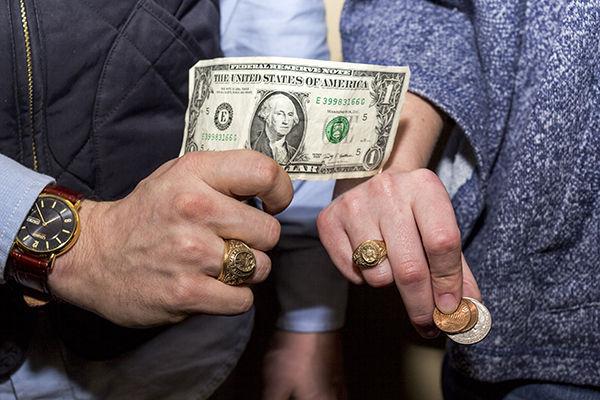On average, women in the United States will be paid 77 cents to every dollar earned by a man. In Texas, the rates are slightly higher, with women receiving 79 cents to the dollar, but this is not something to be celebrated.
The average difference is just 23 cents. That doesn’t sound much; less than a quarter. But let’s look at the long term. For every $1,000 a man makes, a woman makes $770. For every $10,000, a woman makes $7,700 and for every $1 million a man makes, a woman makes $770,000.
So we’ve gone from a difference of 23 cents to $230,000. That difference makes a significant impact on what people can buy — the man in my math problem has the extra money to buy a car and pay off a mortgage, but the woman doesn’t.
The wage gap has not moved in a decade, according to Texas A&M’s Women’s Resource Center. As a woman on the verge of graduating, this is the reality I and thousands of other women have to face. As disadvantaged as I might be in the future, women of color can expect even less pay and have been statistically shown to be worse off than white women.
But why? President Kennedy signed the Equal Pay Act in 1963, making sex discrimination in the workplace illegal, which includes salary discrimination. However, here we are 52 years later, still having the same arguments and concerns that have been going on for more than half a century. Why aren’t companies being singled out every day for paying women workers less than men?
Part of the problem stems from the fact that salary is a taboo topic in the workplace. No one goes from office to office asking how much their co-workers get paid, and the problem is shielded by a lack of information.
So how can we fix this part of the problem? A good place to start is with programs offered to help women be more aware of their finances. A&M offers such programs, like a Start Smart Salary Negotiations Workshop. The workshop teaches women how to negotiate for fairer wages. More programs like A&M’s workshop need to be installed at campuses and high schools across the country to empower women to stand up for their right to equal pay. Another avenue comes in the form of anonymous audits to measure salary differences and keep companies accountable.
These are good places to start, but the real problem needs more fundamental solutions. The negative societal outlook on women runs deep and will only be fixed when society adopts a different mindset.
For those that will ignore me, saying I’m just another woman whining, I have to point out this is not just a women’s issue. Nearly every man has a sister, spouse, daughter, friend or some other female in their life that they value. Do you really want to look at them at tell them they’re worth less as a worker in society? Because that’s what a pay gap, in it’s most fundamental form, means. Women are not worthless, so we are not worth less.
Jennifer Reiley is a communication senior and assistant managing editor for The Battalion.
Graphic by Frederica Shih
Not worthless. Not worth less.
February 3, 2015

0
Donate to The Battalion
$2790
$5000
Contributed
Our Goal
Your donation will support the student journalists of Texas A&M University - College Station. Your contribution will allow us to purchase equipment and cover our annual website hosting costs, in addition to paying freelance staffers for their work, travel costs for coverage and more!









